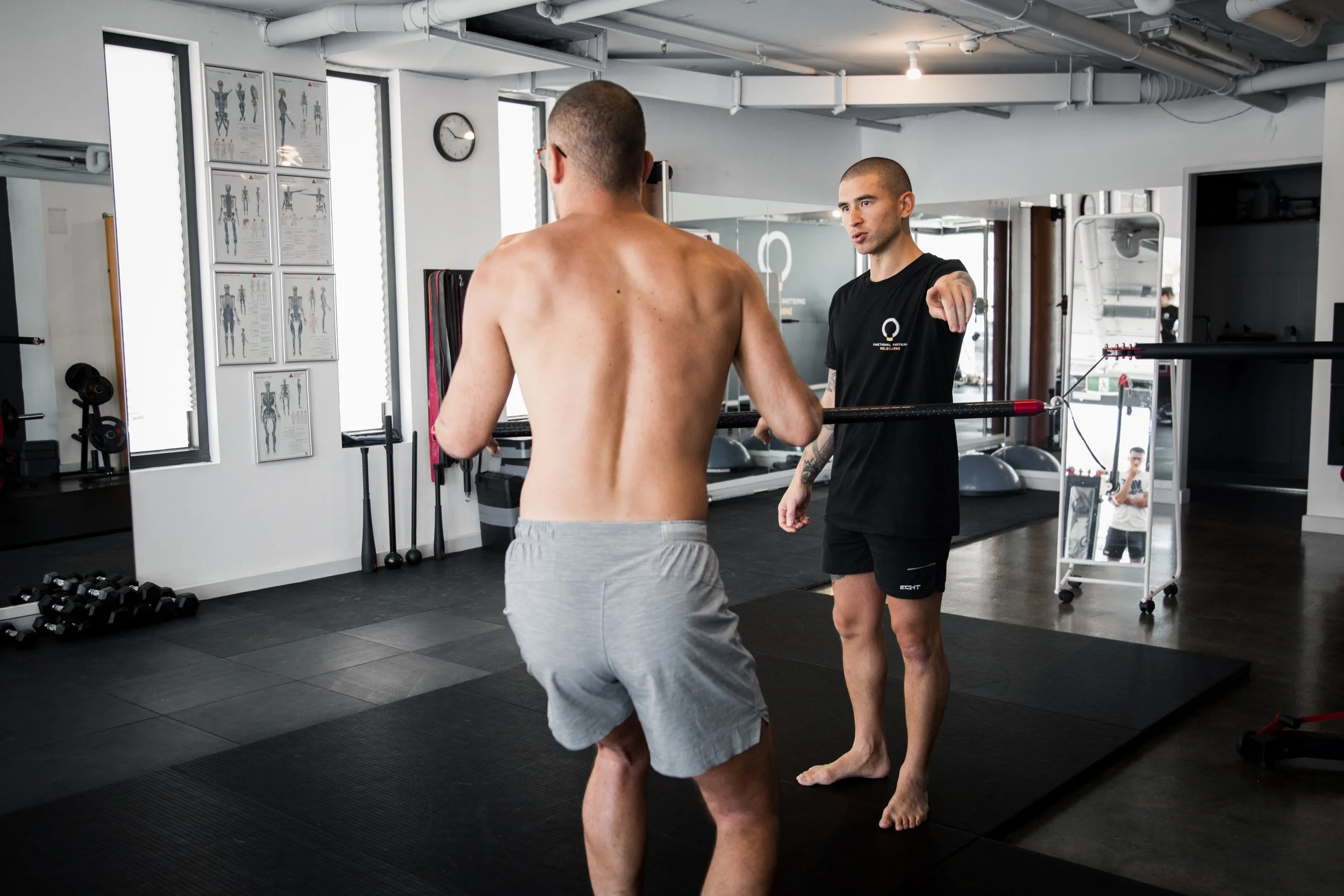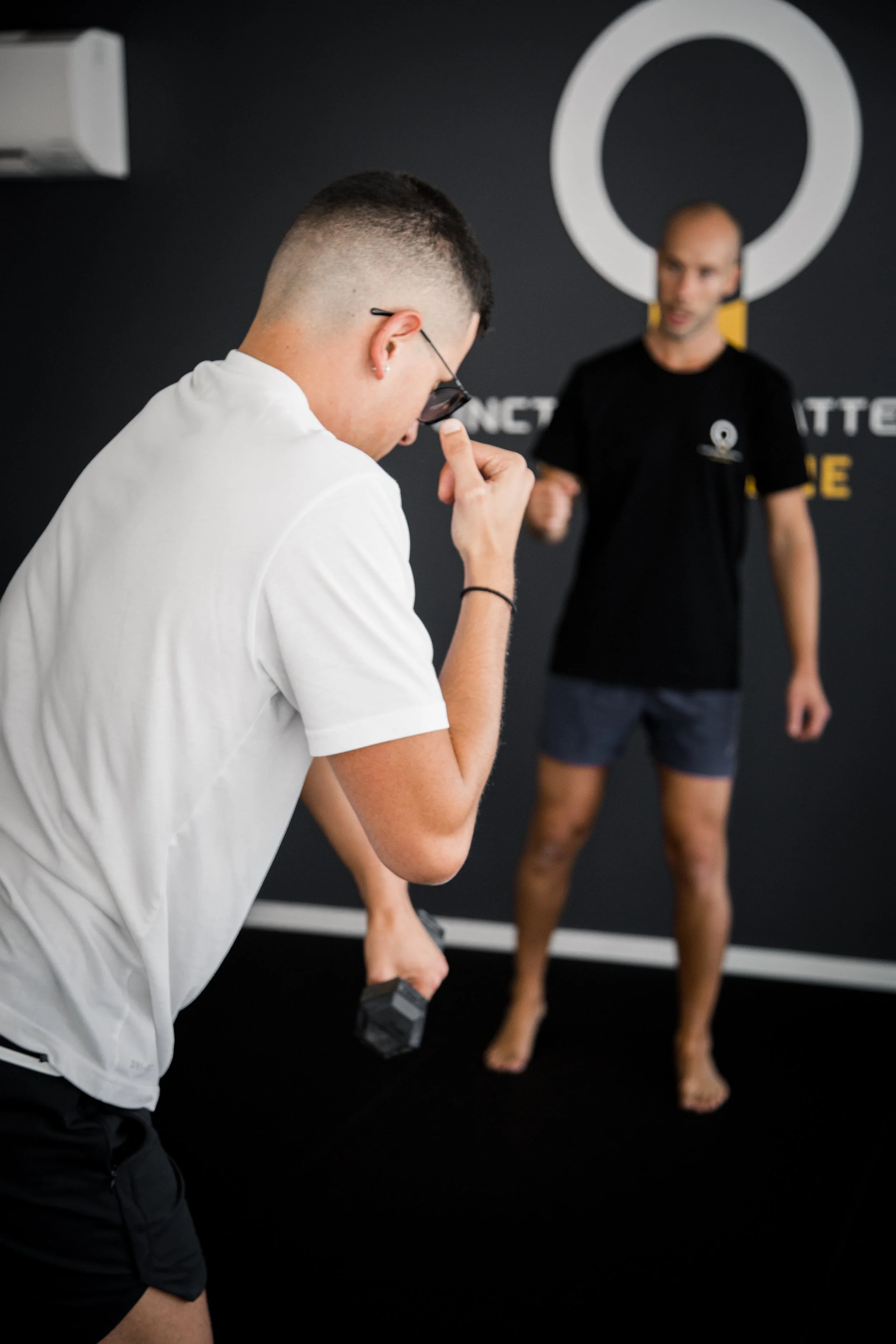
CORRECT POOR POSTURE
Stand tall, proud, and pain-free!
Here at Functional Patterns we address the system, rather than the symptoms to get you out of a poor posture and moving towards a more optimal human being.
WHY DOES FIXING POOR POSTURE MATTER?
Correcting poor posture is incredibly important as it reduces the bodies over-all connectivity and function. Scroll to the end of this page to learn about the most important driver of your posture and pain – the fascia. Otherwise, read about possible (and actionable) causes of poor posture alongside before & after case studies of people who have transformed their posture and quality of life.
BIOMECHANICAL FACTORS
-
Think of your posture as the way you are ‘vertically stacked,’ somewhat like a game of Jenga. If you were to gradually pull at random pieces of the Jenga tower, it would eventually start leaning over to one side and lose its structural integrity.
While humans are more complex than a game of small wooden blocks, the same principles of physics apply. We are constantly being acted upon by gravity, pulling us down towards the earth. We need to make sure our various muscles, joints, bones etc are firmly in place and stacked correctly on top of one another.
POOR BREATHING
-
The breath is a powerful force within the body, capable of influencing the bodi’s structure based on where it holds its pressure.
Take a deep breath. Where do you feel it? Do you notice certain parts of your body rise and fall? Perhaps you feel your breath in your shoulders, or maybe it travels to the lower belly.
Much of postural correction lies in breathing correction. Where do you want to create pressure to expand and strengthen? Where do you want to reduce the pressure?
The areas where your breath resides grow space for you to do so. If you take deep breaths into your chest and shoulders, you will grow a bigger frame to accommodate. If you take small, shallow breaths into your stomach, you will likely express this in your frame.
ASYMMETRIES IN THE BODY
-
Of course you do. We are generally either ‘left hand’ or ‘right hand dominant.’ But this doesn’t just stop at our hands.
If you’re about to fall over, which leg always comes to your rescue? When you brush your teeth or hair, is it with the same hand you write with? What about when you play sports or exercise?
You may not stop to consider these choices, but it has a vast effect on your posture. Achieving symmetrical posture comes from developing and balancing both sides of your body.
While you may always have a favourite hand to write with, you can focus on the everyday macro movements (standing, walking, running, throwing, and breathing), and try to make these more balanced and symmetrical.
“
At 53, I was hoping to reverse some of the years of slouching and am thrilled at the results so far!
-Jackie
FASCIA’S INTEGRAL AFFECT ON POSTURE
-
Fascia is a type of connective tissue that surrounds and supports various structures in the body, including muscles, bones, and organs. It is dense, fibrous, and made up of collagen and other proteins.
-
Fascia has several functions, such as providing structural support, allowing movement and flexibility, and facilitating communication between different parts of the body.
-
Tight or restricted fascia can cause pain, stiffness, and limited mobility. but it can adapt to mechanical stress, remodelling the cellular/tissue structure and changing to suit the environment.
Even when we are just sitting or standing, our body is constantly making adjustments to compensate for our motions, big or small. The connecting mechanism of all these movements is fascia.
-
Its job is to adapt to mechanical stress and if that mechanical stress is abnormal or dysfunctional, your fascia has to work double time and compromise its values to adapt to that stress.
This is the fundamental basis of maladaptation. You put your body in a certain position or move it in a certain way enough times and it is forced to adapt to that environment – whether that adaption benefits you or harms you.
-
Once your body has maladapted to an environment of dysfunctional movement, your fascia becomes less lubricated and rigid. It essentially calcifies/hardens.
Your body’s structure adapts to dysfunctional movements and loses its structural integrity. People with poor posture feel much less connected within their body because their connecting mechanism, fascia, is now compromised.
-
Fascia doesn’t just handle posture, it innovates and connects the immune system, the nervous system, pain receptors, and just about every single system within your body. Dry and dysfunctional fascia therefore causes a host of issues aside from poor posture.
-
Dysfunctional fascia turns basic feeling receptors within the body into pain receptors. These receptors become overactive and can be identified as a source of chronic pain.
REAL PEOPLE. REAL RESULTS.










